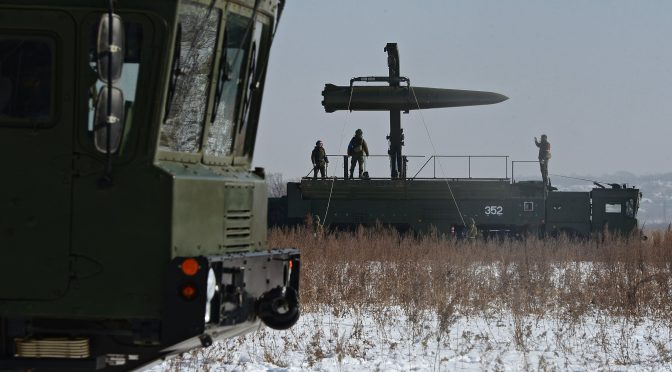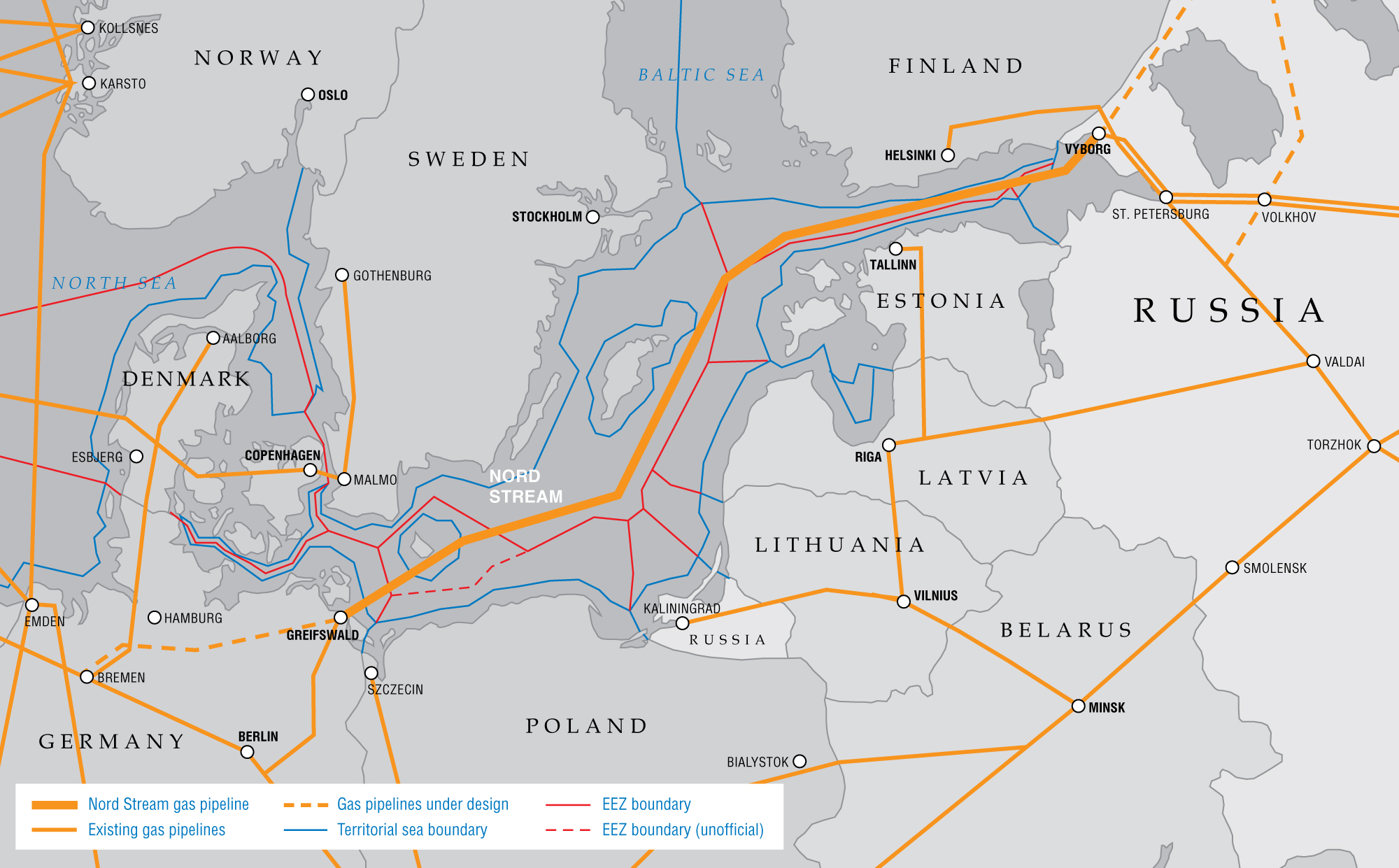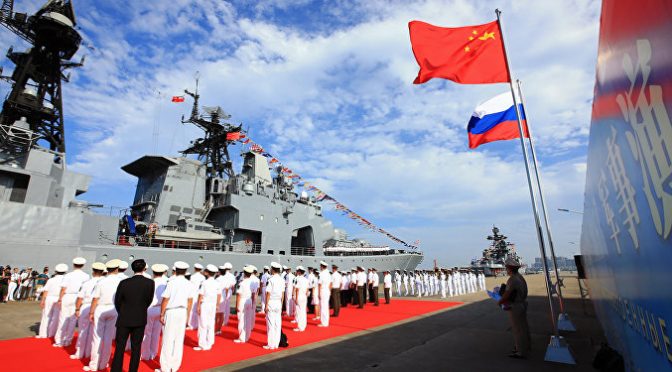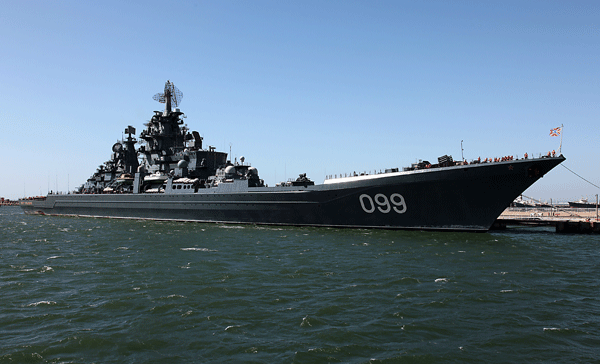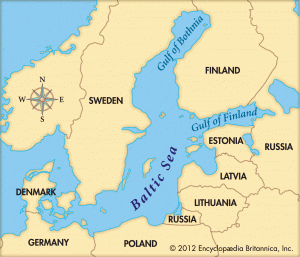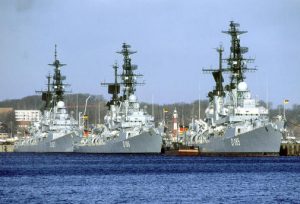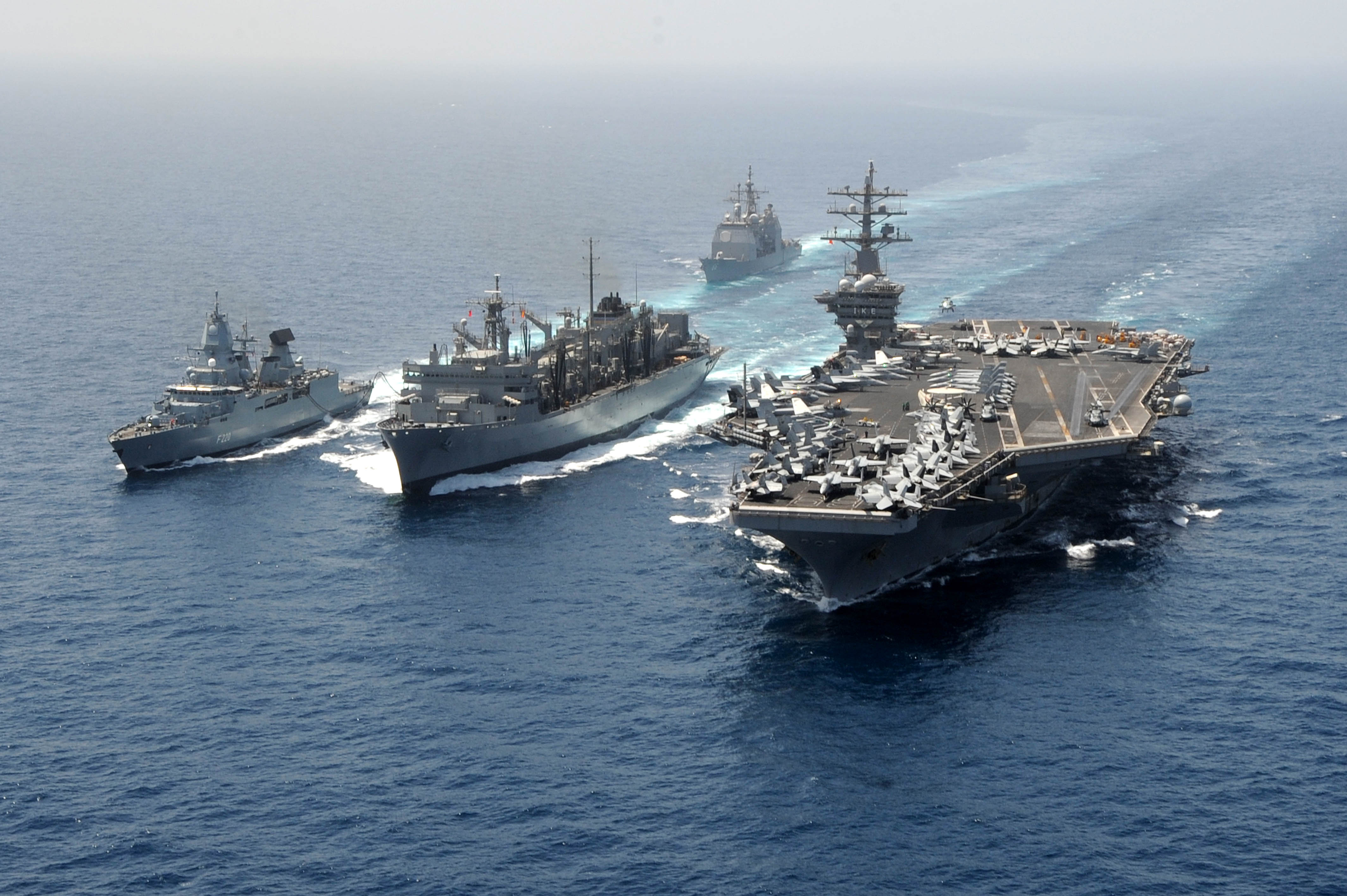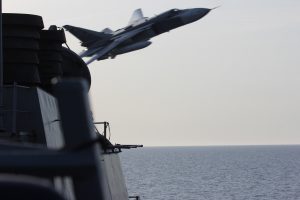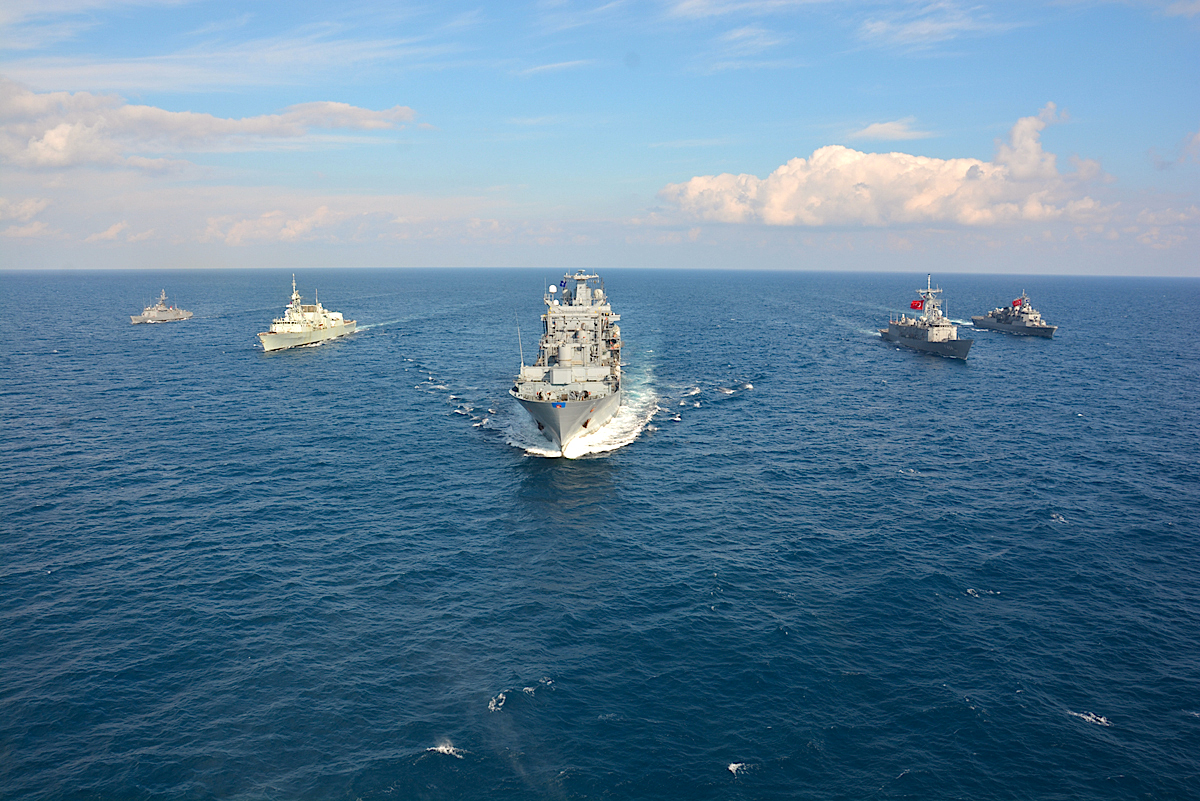By Przemyslaw Ziemacki
Amphibious and transport operations can play a vital role at all levels of war, but landing craft can do much more than just move things – they can also shoot. The global growth of anti-access/area denial capabilities favors smaller, harder to find, more numerous, and attritable vessels. At the same time, the potent evolution of missiles can be combined with the open cargo area on small and medium landing craft to shoot back against both sea and land targets. Civilian offshore support vessels suggest what tomorrow’s landing craft might look like, while the missions they could fulfill are only limited by the imagination.
A Question of What and How Many
Western navies with expensive and highly-trained crews typically focus on high-quality vessels as a deciding factor in contemporary naval operations. On the other side, Russian military thought and even Josef Stalin himself espoused that “quantity has a quality all its own.” Both considerations are important: quality plays a key role but there is a minimum quantity needed to perform particular task, particularly when considering combat attrition. A navy can have a single high-end warship, like a French aircraft carrier, that simply cannot be operationally available 365 days a year. The insufficient quantity of modern vessels is a widely known problem for many navies. Each vessel can only be in one place at a time, which periodically includes the dry dock for planned and unplanned maintenance.
Constructing and maintaining more high-quality and single-mission vessels is rarely the best option due to fiscal constraints. Instead, multi-mission vessels can help fill these gaps. One of the ways to fulfill this concept is to build a hull with possibility of changing its payload, such as the Littoral Combat Ship and Absalon-class support vessels – both frigate-like ships with replaceable modules. A more natural word association with “payload,” however, is “landing craft” rather than “frigate.”
Many naval discussions fixate on large, high-profile navies that mainly need expeditionary vessels to perform operations all over the world and to transit rapidly between theaters. So, even if a vessel class is dedicated for green water or littoral operations, it is usually designed with the range and seakeeping of a typical blue water warship to simply arrive in theater.
Maritime geography is vitally important for both warship and fleet design, but this applies to all navies, both large and small. Many small navies have a more focused area of operations – along their national coasts or within a particular inland sea, many of which are also strategic hotspots (e.g., the Black Sea, the Baltic Sea, the Arabian/Persian Gulf and the South China Sea). Naval presence and potential conflicts in these regions require relatively smaller but more numerous vessels. Naturally, this does not mean that frigates, destroyers and cruisers are useless, but to fulfill missions close to coasts, larger numbers of smaller vessels are more optimal in many scenarios. Moreover, many of these smaller countries have land borders with their main potential enemies instead of extensive land or ocean buffers, and so with a more compelling national requirement for a standing army and tactical air force, small vessels may be the only affordable option for small navies.
Even then, truly numerous flotillas with several types of bespoke and single-purpose small vessels is not feasible. Budget cuts often target more complex and expensive warships programs over simpler, less expensive ones. For example, Poland has only 3 vessels of the project 660M (NATO code: Sassnitz-class) fast attack craft. Sweden, which is far wealthier, has a longer coastline, and more focused on naval matters than Poland, has only 5 Visby-class corvettes. They are far from sufficient in wartime. The Baltic States only have mine and patrol vessels.
In these conditions, designing a small naval vessel several roles is an attractive proposition. The basic question is what roles are essential and which of them could be put together in a single small hull that can satisfy the various required operational capabilities. Although major NATO navies have largely abandoned small surface combatants, often called fast attack craft, these vessels remain popular on a global scale because they are simple to construct, inexpensive to build and operate, and have a relatively good size-to-weapon power ratio. Of course, they have many disadvantages, including poor seakeeping and limited sensor suites, but these are not crucial for operations in coastal waters while protected by a land-based air force and receiving off-board targeting data.
However, such combatants have one particular feature that is problematic for countries that share land borders with their main potential enemies. The lack of land attack capability means that these vessels could be entirely useless, or useful only as a “fleet in being” during the most critical phases of a potential war. Although most of the modern ship-launched surface-to-surface missiles (SSMs) have a land attack mode, this use is generally sub-optimal because it wastes the expensive and complex anti-ship targeting capabilities and specialized anti-ship warhead to hit a fixed land target. A better solution would be to use containerized versions of missiles, and more carefully pair the missile type with the target. Rather than a dedicated launcher fixed onboard the vessel with one kind of anti-ship missile, containerized missiles launchers in the form of standard 20- or 40-foot containers would allow them to be deployed and launched from nearly any surface platform. There are many simulations and concepts showing how such system could work on the deck of a cargo ship or an ocean-going patrol vessel, but deploying one or more of such containers on a ship-to-shore connector with an open cargo hold would be even simpler.
Moreover, some of these vessels could also deploy with self-propelled coastal defense missile or rocket artillery systems, rather than craned-aboard containerized missile launchers, allowing this class of vessels to distribute and support mobile long-range fires in addition to launching its own missiles. Although the U.S. Marine Corp’s Expeditionary Advance Base Operations (EABO) concept for stand-in forces is mainly envisioned for the Pacific theater, it also could also have application in the Baltic and other confined seas.
The Multi-Role Landing Craft
The concept of using a ship-to-shore connector as a missile launching platform suggests an evolution into a multirole vessel based on the hull of a medium landing craft – a vessel with obvious utility for small coastal states outside of combat operations. Such a multirole vessel should have enough space and displacement for a single main battle tank or 3 – 4 lighter vehicles, or at least two 40 foot containers, along with permanently installed weapon systems, passive decoys, and sensors adequate for basic self defense. Conceptually, this means a single light naval gun, short-range self-defense missiles, and a light rotary 3D radar system. With that in mind, the hull should be on the larger side of ship-to-shore connectors, around 130 – 170 feet, or 40 – 50 meters long, have shoal draft, high speed, moderate range (as compared to a fast attack craft) and moderate seakeeping. The proposed multirole vessel could fulfill three main missions:
- Tactical landing and transport operations
- Surface attacks with standard container versions of both anti-ship and land attack missiles, including rocket artillery
- Mine laying
A landing craft-based vessel would be capable of refueling and reloading from unprepared beaches and navigating rivers.
Traditional displacement-type landing craft are not known for their speed. However, recent shipbuilding trends suggests a suitable approach for the proposed vessel, called a surface effect ship (SES), or less often, a sidewall hovercraft. Such a vessel is a mix of a hovercraft and a catamaran, forming an air cushion between twin hulls to minimize resistance. The most famous naval design is the Skjold-class corvette, but with the full displacement of 274 tons and remarkable speed, this design is better classified as a fast attack craft. With its speed of 60+ knots, draft of 1 m, a range of 800 Nautical miles at 40 knots, and relatively wide beam, the Skjold-class corvette is an attractive basis to design the proposed multirole vessel. Moreover, it has an option of transporting 50 combat-equipped soldiers instead of missiles. Norway also has two older SES naval designs, the Alta-class and Oksoy-class minesweepers. Any of these vessels would lend a promising basis upon which to design the proposed vessel, but the civilian Aircat 35 Combi, designed for offshore service sector, would be even better. Although it is a civilian design and it is slightly shorter than the envisioned design, it shares the most valuable features – speed, range and draft – with the Skjold-class corvette and also has a large cargo space on a near-waterline level deck. A militarized variant could be easily adapted from it.
The proposed SES concept – essentially a landing craft upgraded with self-defense capabilities and offensive options, so call it a fast multirole craft – would be an attractive solution for most Baltic and Black Sea navies. Sweden and Finland have many islands that require fast deployment of high mobility troops between them as well as capable and flexible anti-ship capabilities to counter enemy landing operations. The concept would also incorporate minelaying capabilities, which is strong emphasized in Finnish naval strategy. For the Baltic States, the proposal for small naval vessels with survivable and long-range land attack capabilities could provide strong fiscal justification for acquiring vessels beyond inshore patrol and mine warfare vessels – vessels which would provide Baltic navies with significant combat capabilities.
Unfortunately, the geopolitical situation of certain Baltic Sea states may also require a reverse landing operation, or evacuation, which is yet another factor in favor of a fast landing craft. In Poland there is an opinion that mobile land batteries of anti-ship cruise missiles are more optimal than shipborne ones because of the exposed seacoast where a fast attack craft does not have many places to hide. However, the proposed fast multirole craft moves faster than a truck, but is always ready to launch a missile. Landing capabilities may be required by the Polish Navy to support its Baltic Allies if Russia captured the Suwalki Gap or otherwise interdicted land lines of communication with the Baltic States. In such case, moving troops across the south east part of the Baltic Sea would be much more risky in the large, slow Lublin-class (project 767) landing ships, which the Polish Navy operates today, than in a numerous flotilla of small and very fast vessels. Poland, Romania, and Ukraine could use such flexible vessels on their big rivers – Vistula, Odra, Dnieper, and Danube. Finally, these vessels would be well-suited for inland seas.
Bigger Applications for Small Craft
Bigger navies could also deploy these vessels in green and brown waters as well – either by transporting them in amphibious warfare ships or permanently forward-deploying them in-theater. Although the U.S. Navy, needs more true blue water warships, it should be remembered that during WWII the U.S. Navy had large numbers of motor torpedo boats and all sizes of landing craft – including those equipped for shore bombardment with rocket artillery. A future war would likely require a similarly large, dispersed, and hard-hitting force. As previously proposed on CIMSEC, missile-equipped SES landing craft would bring the perfect mix of speed and flexibility.
Of course, not all of these small, fast, and heavily armed vessels would necessarily be manned. The proposed vessels could be easily designed as optionally manned and become incorporated into the U.S. Navy’s fleet architecture plan. The US Navy’s need of fast attack craft was discussed in the June 2019 USNI Proceedings article, which proposed a very interesting concept of using LHDs and LPDs as corvette-carrier mother-ships for Skjold-class-like vessels.
Both China and Russia, the main potential enemies of the United States and its Allies, invest in fast attack craft and small landing craft, for example the Houbei-class and the Dyugon-class. Now especially the PLAN has great numbers of true blue waters vessels as well as the fast attack craft. To counter these threats, the United States and its Allies may need both kinds of vessels as well. The SES design seem to meet the needs of numerous green and brown waters flotillas nearly perfectly.
In 1982 none other than Tom Clancy himself proposed firing strategic nuclear missiles from hovercraft – repurposed ship-to-shore connectors that could scatter on alert. The vessel concept described above is not revolutionary or even wholly novel, but an evolutionary case of form following function.
Przemysław Ziemacki is a freelancer journalist and photographer from Poland. He currently writes for Polityka, one of the largest Polish weeklies. He previously worked for the local press and has also published in National Geographic Poland. He has a long-standing avocational interest in naval matters as reflected in his first CIMSEC piece, “Is the Moskva-class Helicopter Cruiser the Best Naval Design for the Drone Era?”
Featured Image: Skjold-class fast attack craft KNM Storm of the Royal Norwegian Navy (Wikimedia Commons)


